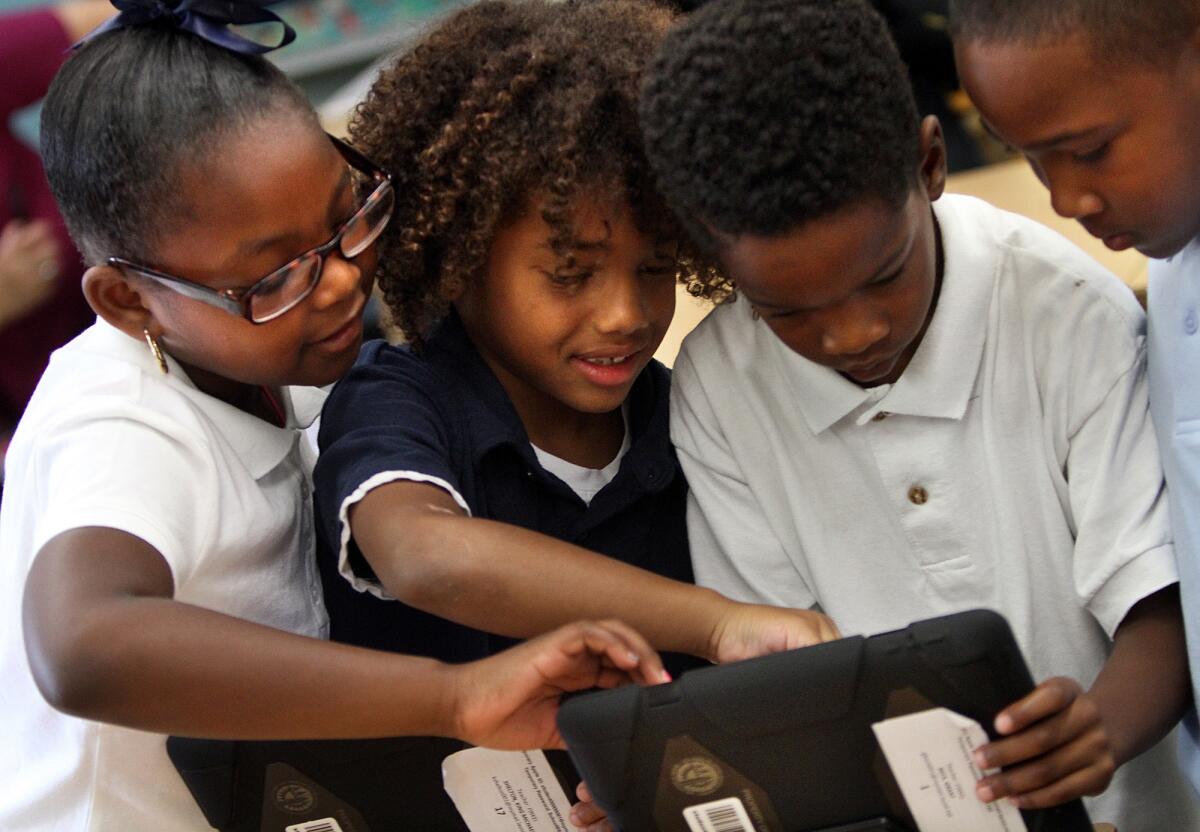LAUSD’s $1-billion iPad effort beset by problems, report finds

- Share via
The groundbreaking effort to provide an iPad to every Los Angeles student, teacher and school administrator was beset by inadequate planning, a lack of transparency and a flawed bidding process, according to a draft of an internal school district report obtained by The Times.
The much-anticipated analysis is drawn from public and closed meetings held over 10 months by a committee chaired by school board member Monica Ratliff. That panel, composed of parents, employee representatives and district officials, heard presentations, posed questions and gathered documents from experts and administrators. Ratliff directed that the report remain confidential until committee members could provide input.
The Times obtained it from sources who requested anonymity because they were not authorized to release it.
The committee review stops short of accusing anyone of wrongdoing, but offers a carefully worded rebuke of the $1-billion-plus technology effort in the nation’s second-largest school system.
The bidding process—and events leading up to it—were singled out for particular criticism. The report concludes that the district needlessly limited its options on price and product, and raises questions about whether the process was fair.
Among the findings:
- The initial rules for winning the contract appeared to be tailored to the products of the eventual winners—Apple and Pearson—rather than to demonstrated district needs.
- Key changes to the bidding rules were made after most of the competition had been eliminated under the original specifications.
- Past comments or associations with vendors, by top-level district officials, created an appearance of conflict even if no ethics rules were violated.
Last year’s iPad rollout at 47 schools suffered a series of setbacks. In one, students at three campuses deleted security filters so they could browse the internet—prompting officials to prohibit the iPads’ use outside of school.
The effort was expected to expand districtwide by the end of 2014, but officials pushed the timetable back and are also testing laptops at the high school level as a possible alternative to iPads for older students.
Many students and teachers have expressed excitement about using the $768 devices and the opportunities they might offer. The report also supports the goals and potential benefits of the technology push.
Both the devices and the curriculum on them have been paid for with voter-approved, school-construction bonds.
Twitter: @howardblume
More to Read
Sign up for Essential California
The most important California stories and recommendations in your inbox every morning.
You may occasionally receive promotional content from the Los Angeles Times.














